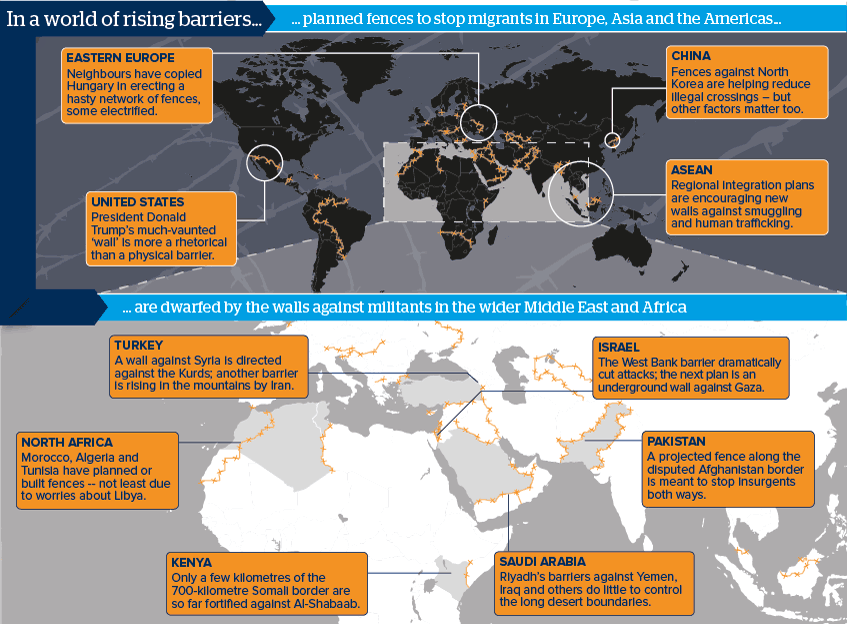A world of walls may also see a rise in interventions
Grandiose barrier-building plans are a new global fashion; the reality is more complicated
Source: Oxford Analytica, media reports, The Economist, Ron E. Hassner and Jason Wittenberg (2015) “Barriers to Entry: Who Builds Fortified Boundaries and Why?” in International Security 40.1.
Outlook
The new trend of raising barriers will intensify, as populist politics remains strong in developed countries, while the Muslim world is under increasing pressure (both internal and external) to control militants and migrants. There is an additional contagion effect: fences can breed other fences because of diverted refugee flows, as in Eastern Europe.
The evidence suggests barriers work best if the constructing country also has some influence on the territory beyond (for example, the wall between Israel and the West Bank): a world with higher fences could therefore -- counterintuitively -- actually see more attempts at cross-border interference.
Impacts
- Rich countries adjoining poorer ones could be the dominant future fence-builders.
- The Muslim world will be a key focus, both building and suffering from barriers.
- The most effective barriers will enclose small enclaves, as in Gaza, Melilla and Ceuta.
- Walls will have little impact on global terrorism, which is less about movement of people than about contagious ideas.
